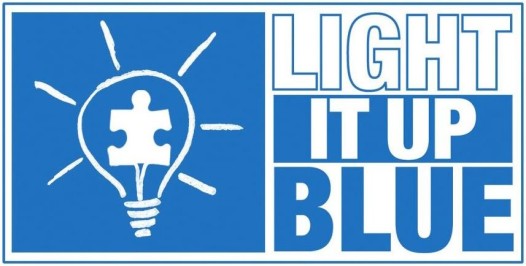
April is Autism Awareness Month, with today, April 2, designated as “Light It Up Blue Day.” On this day, the organization Autism Speaks encourages people nationwide to shine a (blue) light on this disorder that is presently affecting more than 3 million individuals in the United States and millions more worldwide. According to the Centers for Disease Control, an estimated 1 out of 42 boys and 1 in 189 girls are diagnosed with autism in the United States. Statistics suggest that prevalence rates have climbed 10 to 17 percent annually, with no established explanation for this continuing increase.
With the ever-expanding population of those on the autism spectrum, the question arises, “How do higher centers of learning accommodate this group of students to provide the best learning experience for them?” Those on the autism spectrum have a wide range of abilities, with a great number of them able to do college-level work.
Many students on the autism spectrum will complete high school, but traditionally have not been able to attend college or other post-secondary education. That is changing. According to Stephanie Pinder-Amaker, PhD from Harvard Medical School, recent statistics indicate an increase of more than 20 percent from 2003 to 2009 in the numbers of those with autism attending a college or university. With a growing number of students with autism, colleges and universities have adjusted their curriculum, without lowering standards, so that those with autism can succeed.
Many universities across the United States and around the world have made changes that have eased the transition of the autistic student, as well as those with other disabilities. According to Shawna Foose, the Assistant Director of the Goldman Office of Disability Services at Tulane University, “All universities and colleges are expected to comply with the Americans with Disabilities Act, and state and local requirements regarding individuals with disabilities. Under these laws, no qualified individual with a disability shall be denied access to or participation in services, programs, and activities.”
The mission of the Goldman Office of Disability Services, Foose said, is “to reduce barriers in our campus environment and provide equal access to all who come to Tulane. We do that by working with students on an individualized basis to determine what barriers they might encounter and, if necessary, making adjustments to the academic or physical environment at Tulane.”
So how have colleges and universities like Tulane adjusted to students with autism and other disabilities? They understand that every student is different and requires specific adjustments in order to succeed. Students with autism have different communication, social, motor, and coping skills, in addition to sensory differences and learning styles.
With this in mind, professors meet with their students before each semester in order to coordinate the curriculum so that the student may succeed. These specific adjustments may include preferred classroom seating, notetakers, or extended time for tests and projects, all of which are coordinated by the disabilities office.
The opportunity to attend college or university and to succeed in all phases of learning benefits all students, but especially those on the autism spectrum, who would not be able to enter the job marketplace post high school. Additionally, the campus presence of autism-spectrum students has been found to benefit the broader campus community by reducing stigma. Many university professors have never taught anyone with autism before and often say they are grateful for the opportunity.
“I would like to thank you for taking the course, Ben,”James Markway, an adjunct professor at Tulane University, said to me. “You are not the first student I have taught who needed a bit of extra consideration, but you are the first student I have taught who has autism. Thank you for the opportunity to learn from you.! You have fully proven that autism need not be a barrier to a college education — that applies to you, and to anyone else who has autism and desires a college education.”
Thank you, Professor Markway. And thank you, Tulane University.
 NOLAbeings Multimedia artist Claire Bangser created NOLAbeings as a portrait-based story project that marries...
NOLAbeings Multimedia artist Claire Bangser created NOLAbeings as a portrait-based story project that marries...  Voodoo in New Orleans: Reviving history: New Orleans fortune telling This article takes a deep dive into the history of Voodoo in New Orleans, its hybridization with Catholicism, and its present-day place in the city's culture. The author visits fortune-tellers in the French Quarter, using their guidance as a tool for introspection rather than a deterministic predictor of the future. Through her experiences in New Orleans, the author feels a mystical connection to both the past and the future.
Voodoo in New Orleans: Reviving history: New Orleans fortune telling This article takes a deep dive into the history of Voodoo in New Orleans, its hybridization with Catholicism, and its present-day place in the city's culture. The author visits fortune-tellers in the French Quarter, using their guidance as a tool for introspection rather than a deterministic predictor of the future. Through her experiences in New Orleans, the author feels a mystical connection to both the past and the future. 